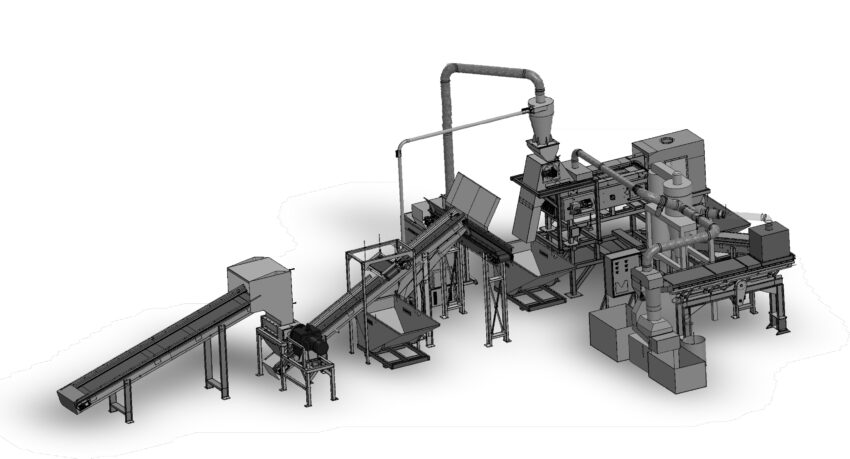In the vast field of recycling, the variations of materials, size, processes, and desired outputs can be virtually endless. In addition to paper, plastic bottles, and aluminum cans, industrial recycling can include electronics, LEDs, batteries, catalytic converters, precious metals, medical supplies, construction materials, and more. Today, EV batteries can be nearly as large as the vehicle and laden with valuable materials to reclaim. Even outdated military ammunition and equipment needs to be safely recycled.
“There is so much variability in recycling material, size, and processes that each shredding system really needs to be customized to meet the requirements of a specific application, with consideration of the desired throughput and profitability objectives,” says John Neuens, Industrial Consultant, BCA Industries. The OEM provides complete custom recycling systems for complex industrial and commercial applications.
From his industry experience, Neuens outlines some of the key steps that recyclers will need to consider to customize a recycling system to their specific requirements.
Accommodating Process Complexity
Designing and manufacturing a recycling system is particularly challenging when large packages or assembled structures must be efficiently shredded. In the case of EV batteries, the recycler may start with a structure as large as eight feet long, four feet wide, and one foot thick filled with cells.
According to Neuens, the first goal is to separate and reduce the material to a more manageable size. The material is then separated using various techniques. Even if reduced to small sizes, efficient recycling necessitates the production of uniformly sized materials to facilitate the separation process.
Neuens adds that it is also important to consider how the material will be packaged for shipping.
Ensuring seamless integration and communication among all component parts through the PLC-based control system with user-friendly touchscreen interfaces is also a critical challenge in shredding system design. A quality system includes programmable software to adapt the system for various input types and materials.
Post Installation Modifications and Support
Successful system implementation would ideally extend to simplifying maintenance and operator training post-installation as well. As part of their service, BCA trains operators and creates online video manuals to expedite the productivity of new users.
Modifying the system for new material types or sizes is also a common request.
“Often the customer doesn’t know what the future holds in terms of recycling,” says Neuens, adding that it is common for recyclers to start with one feedstock and then request processing of additional materials of different types, sizes, or geometries.
Implementing system changes may not be as straightforward as customers perceive.
“If a system is initially designed for processing specific feedstock, customers might seek to modify it to handle tougher materials or larger sizes. This adaptation could necessitate intricate adjustments across various aspects of the system to accommodate such changes. Potential modifications might include upgrading to a larger shredder, chamber, or knives,” says Neuens.
In the industrial sector, the complexities of modern recycling demand an approach that prioritizes integration and customization. The variability in materials and processes calls for recycling systems that are not only tailored to specific applications but also maintained as cohesive units.
By consolidating design, installation, and ongoing support with one provider, companies can streamline operations, reduce troubleshooting, and adapt more readily to evolving materials and processing requirements. Taking this approach will not only optimize productivity and ROI but also ensure that recycling efforts are sustainable and future ready.
For more information: call 414-353-1002; email john@bca-industries.com; visit www.bca-industries.com.

